Abstract
The enzyme-linked immunosorbent assay is suggested as a reliable, sensitive, and highly specific method for the identification and enumeration of Azospirillum brasilense Cd. As few as 105 CFU/ml can be practically identified by this method. At higher bacterial numbers, sensitivity increased linearly up to 5 × 108 CFU/ml, yielding useful standard curves. No cross-reaction was found either with different closely related Azospirillum strains or with other rhizosphere bacteria. The method allows for a specific identification of A. brasilense Cd. both in pure cultures and in mixtures with other bacterial species, even when the colony morphology is variable. The method was successfully applied to assess the degree of root colonization on various cereals by A. brasilense Cd.
Full text
PDF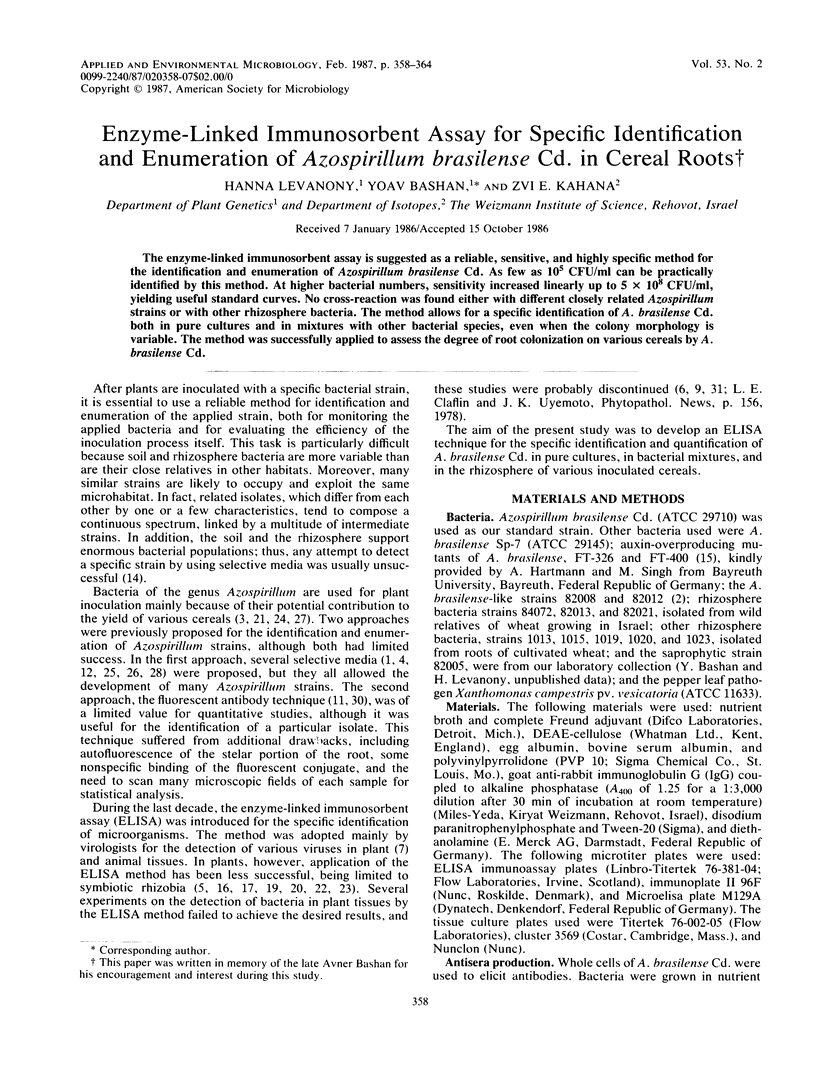
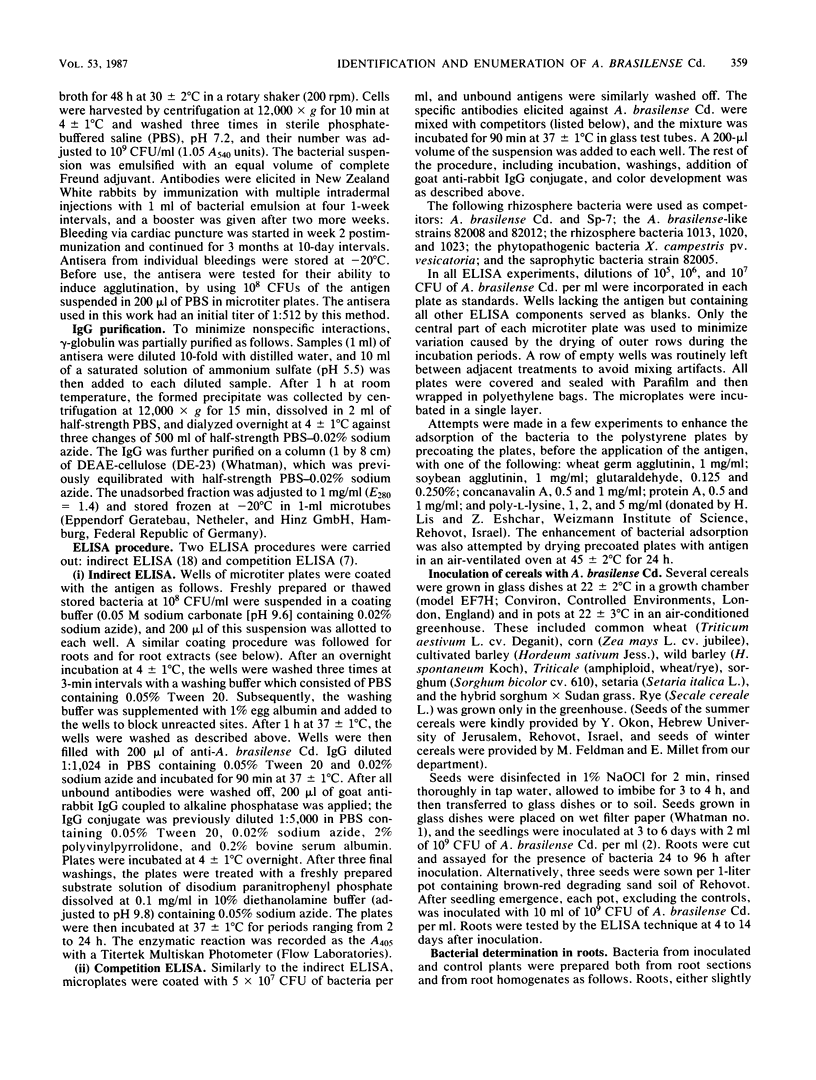
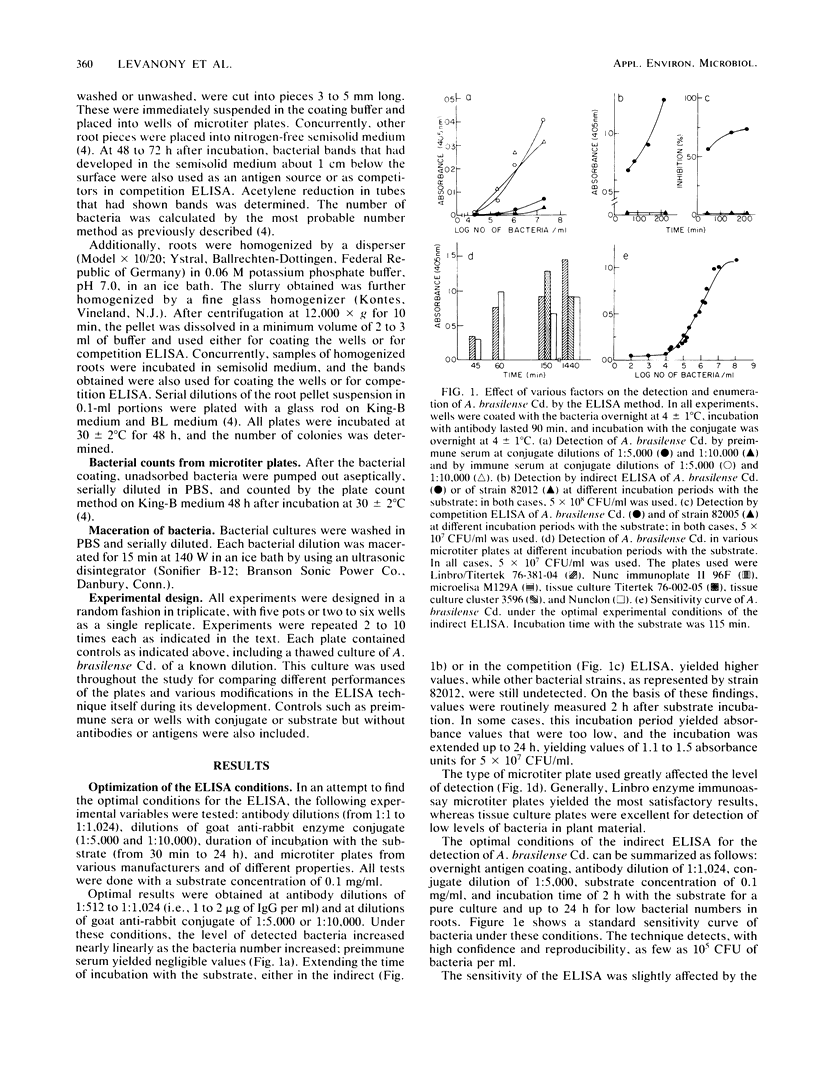
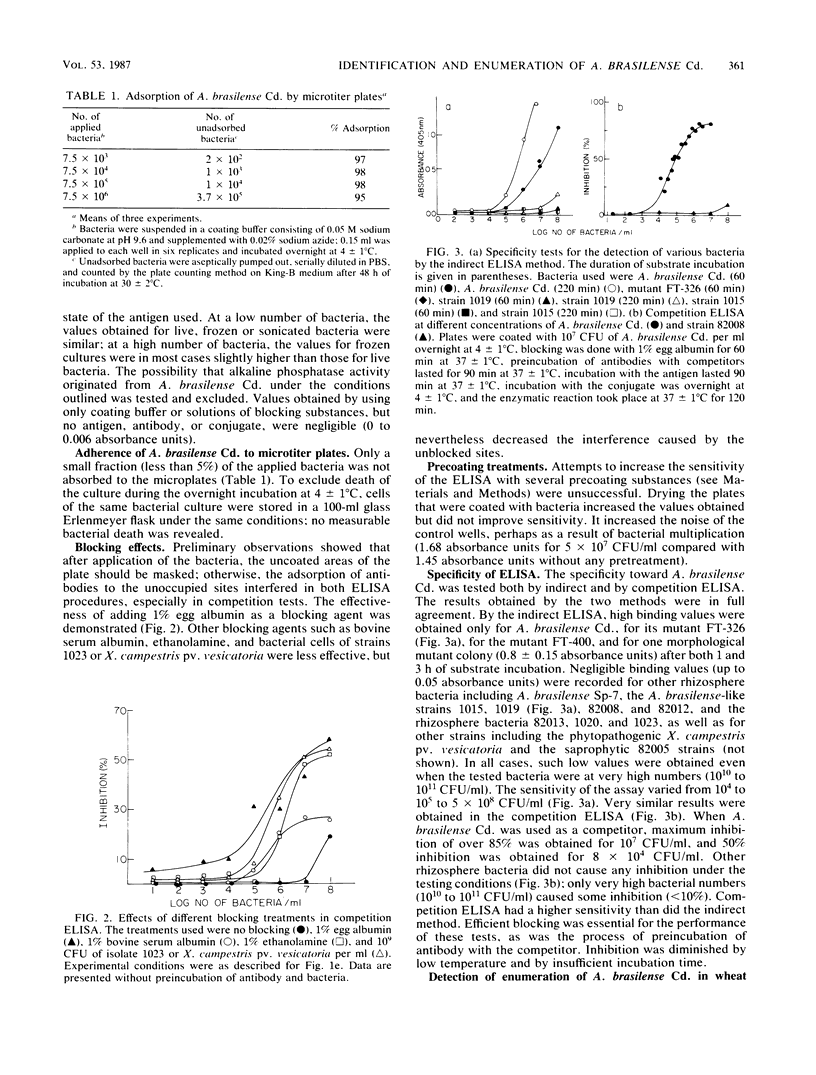
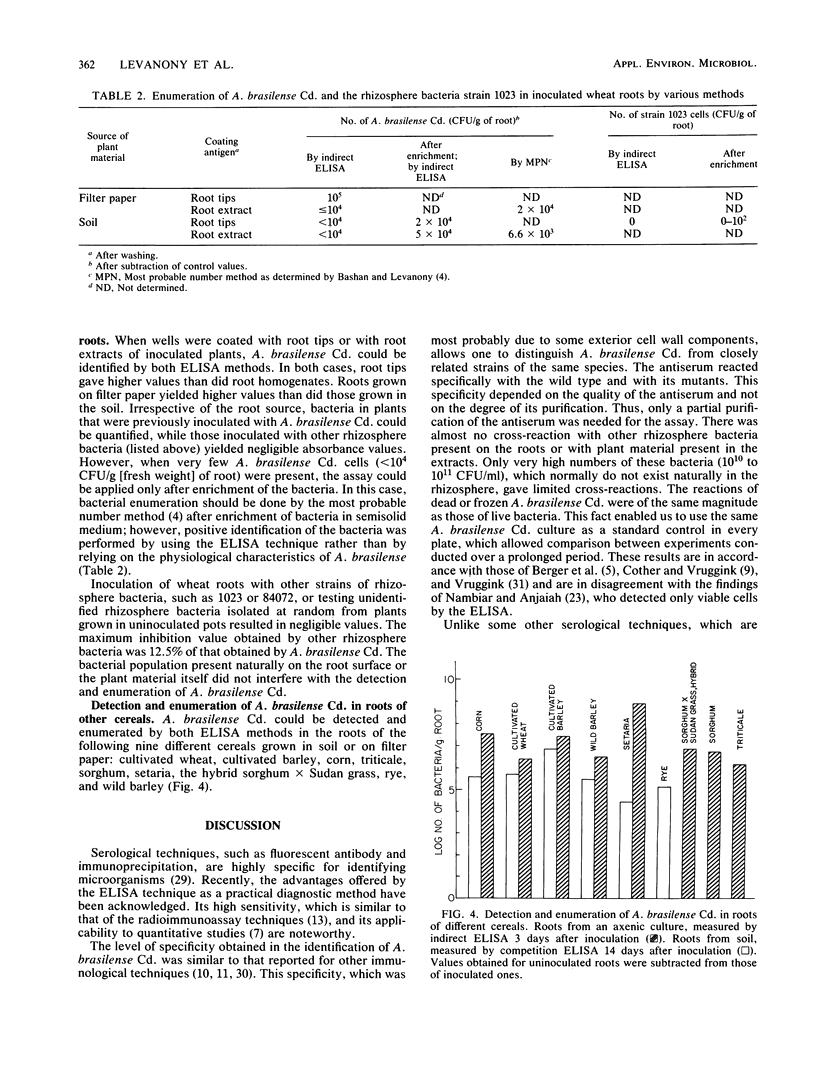
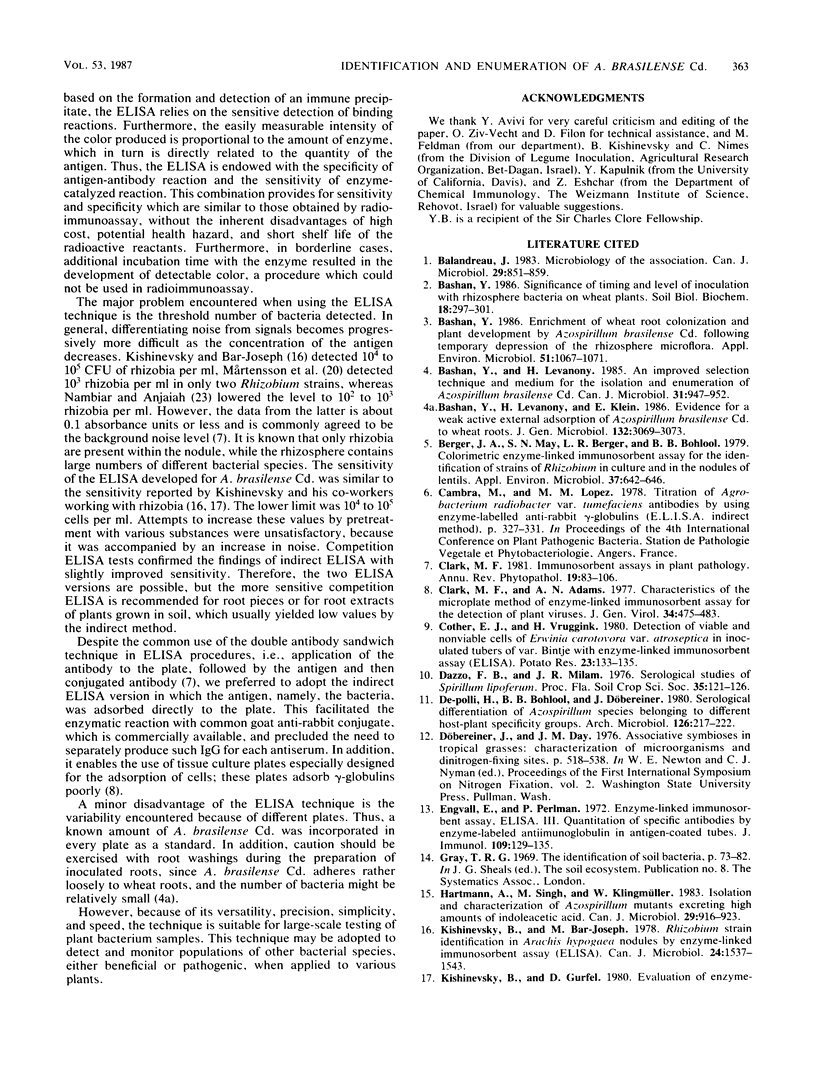
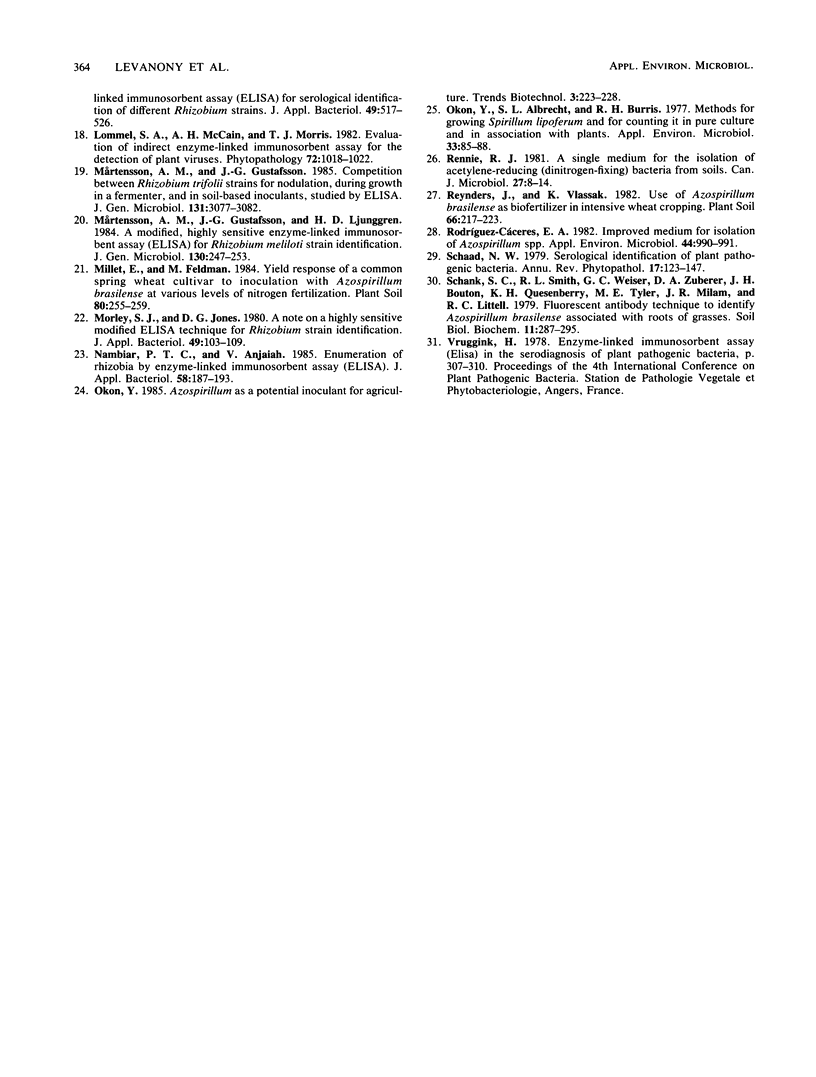
Selected References
These references are in PubMed. This may not be the complete list of references from this article.
- Bashan Y. Enhancement of Wheat Root Colonization and Plant Development by Azospirillum brasilense Cd. Following Temporary Depression of Rhizosphere Microflora. Appl Environ Microbiol. 1986 May;51(5):1067–1071. doi: 10.1128/aem.51.5.1067-1071.1986. [DOI] [PMC free article] [PubMed] [Google Scholar]
- Berger J. A., May S. N., Berger L. R., Bohlool B. B. Colorimetric enzyme-linked immunosorbent assay for the identification of strains of Rhizobium in culture and in the nodules of lentils. Appl Environ Microbiol. 1979 Mar;37(3):642–646. doi: 10.1128/aem.37.3.642-646.1979. [DOI] [PMC free article] [PubMed] [Google Scholar]
- Clark M. F., Adams A. N. Characteristics of the microplate method of enzyme-linked immunosorbent assay for the detection of plant viruses. J Gen Virol. 1977 Mar;34(3):475–483. doi: 10.1099/0022-1317-34-3-475. [DOI] [PubMed] [Google Scholar]
- Cáceres E. A. Improved Medium for Isolation of Azospirillum spp. Appl Environ Microbiol. 1982 Oct;44(4):990–991. doi: 10.1128/aem.44.4.990-991.1982. [DOI] [PMC free article] [PubMed] [Google Scholar]
- Engvall E., Perlmann P. Enzyme-linked immunosorbent assay, Elisa. 3. Quantitation of specific antibodies by enzyme-labeled anti-immunoglobulin in antigen-coated tubes. J Immunol. 1972 Jul;109(1):129–135. [PubMed] [Google Scholar]
- Kishinevsky B., Bar-Joseph M. Rhizobium strain identification in Arachis hypogaea nodules by enzyme-linked immunosorbent assay (ELISA). Can J Microbiol. 1978 Dec;24(12):1537–1543. doi: 10.1139/m78-245. [DOI] [PubMed] [Google Scholar]
- Okon Y., Albrecht S. L., Burris R. H. Methods for Growing Spirillum lipoferum and for Counting It in Pure Culture and in Association with Plants. Appl Environ Microbiol. 1977 Jan;33(1):85–88. doi: 10.1128/aem.33.1.85-88.1977. [DOI] [PMC free article] [PubMed] [Google Scholar]
- Rennie R. J. A single medium for the isolation of acetylene-reducing (dinitrogen-fixing) bacteria from soils. Can J Microbiol. 1981 Jan;27(1):8–14. doi: 10.1139/m81-002. [DOI] [PubMed] [Google Scholar]


